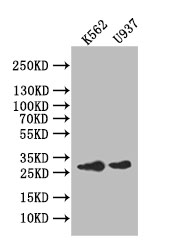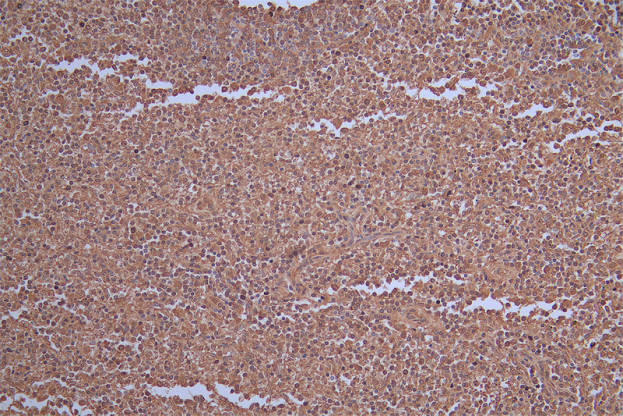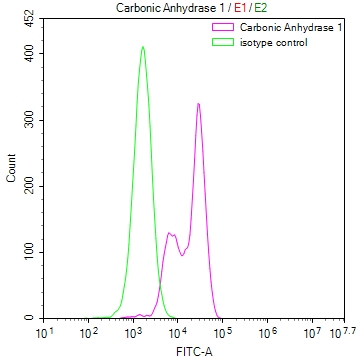The synthesis of the CA1 recombinant monoclonal antibody involves a carefully structured process. It all starts with in vitro cloning, where genes encoding both CA1 antibody's heavy and light chains are seamlessly integrated into expression vectors. Following this, these expression vectors are introduced into host cells, allowing for the recombinant antibody's expression within a cell culture environment. After expression, the CA1 recombinant monoclonal antibody is meticulously purified from the supernatant of transfected host cell lines, utilizing an affinity-chromatography purification method. An outstanding feature of this antibody is its specific reactivity with the human CA1 protein. Additionally, its versatility is highlighted, as it is suitable for a diverse range of applications, including ELISA, WB, IHC, and FC.
Carbonic anhydrase 1 (CA1) mainly catalyzes the reversible conversion of carbon dioxide (CO2) and water (H2O) into bicarbonate ions (HCO3-) and protons (H+). It is crucial for maintaining the body's acid-base balance, facilitating gas transport, and supporting various physiological processes related to pH regulation and metabolism.








